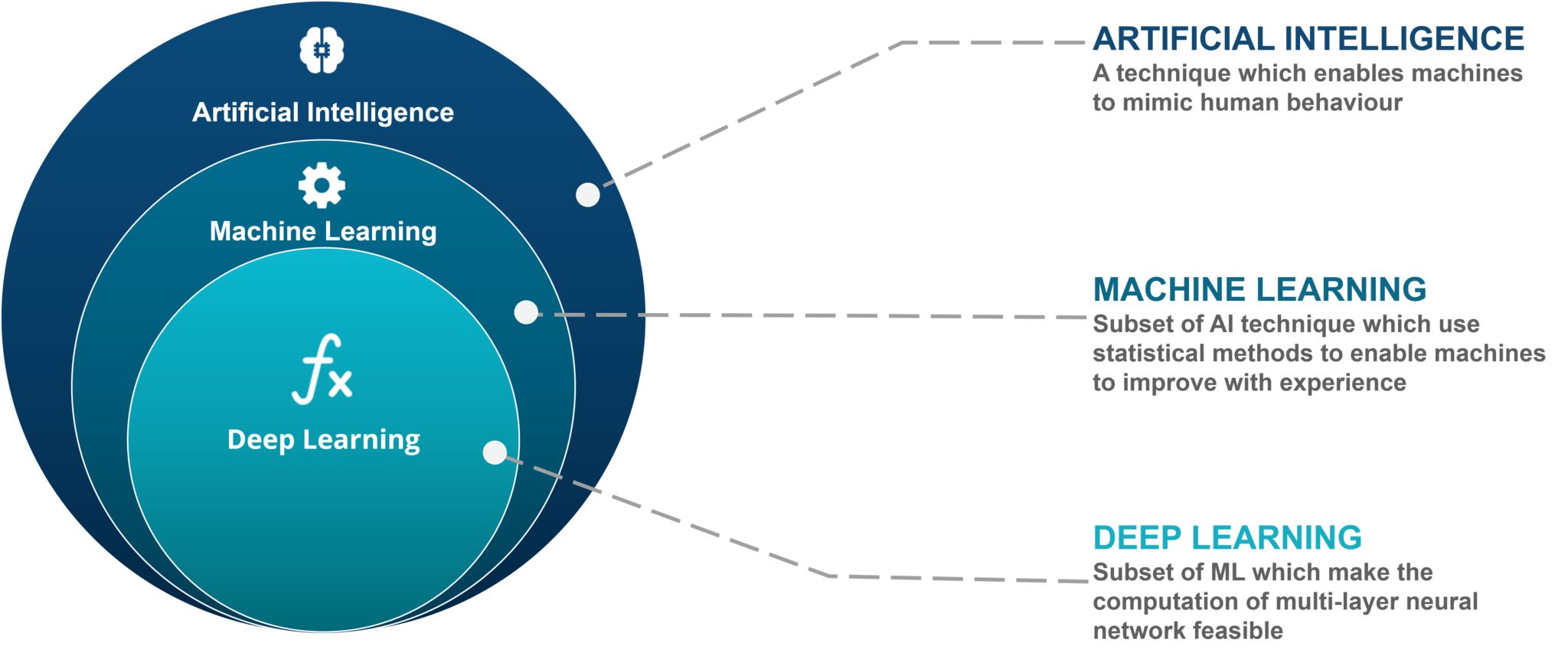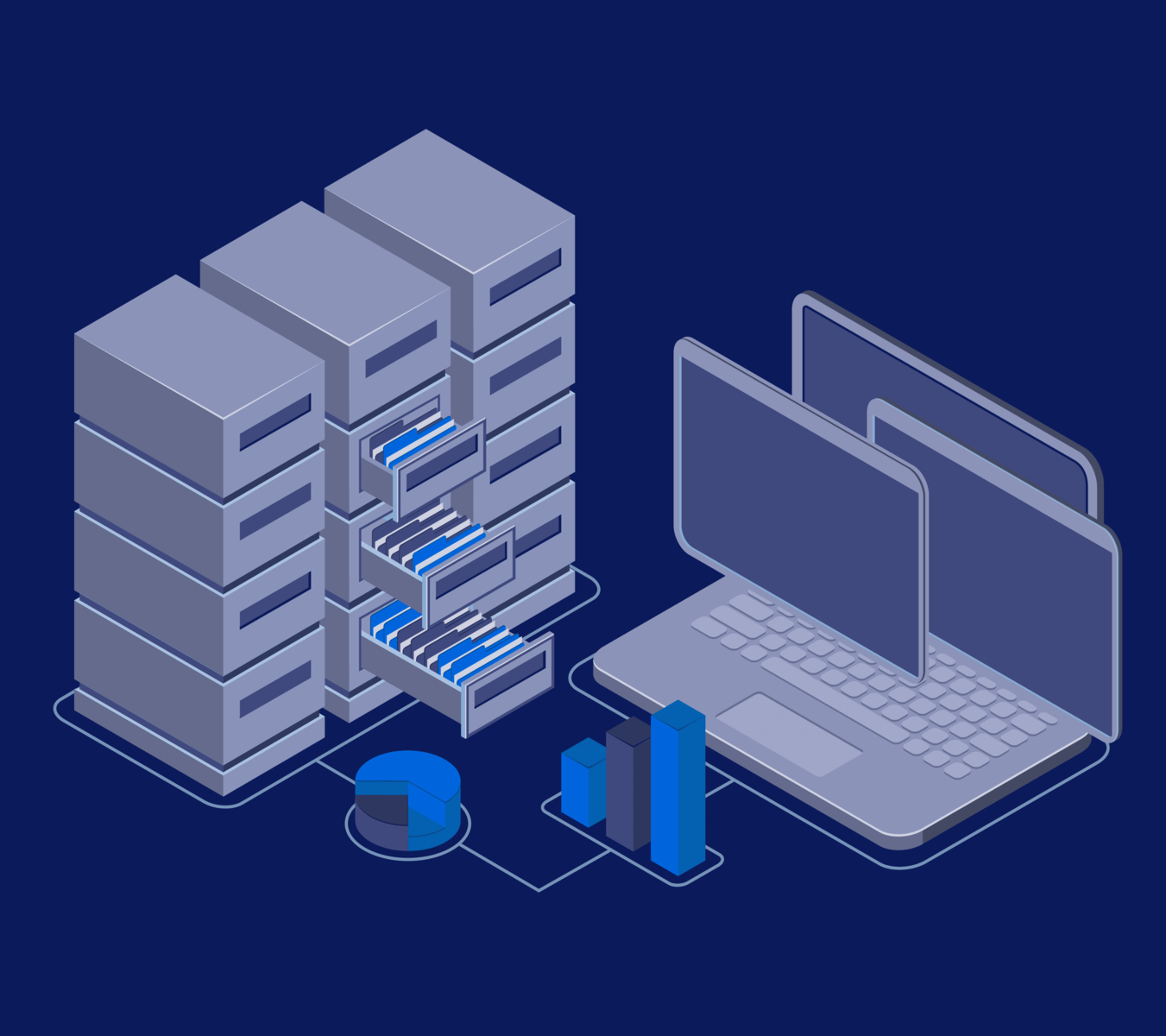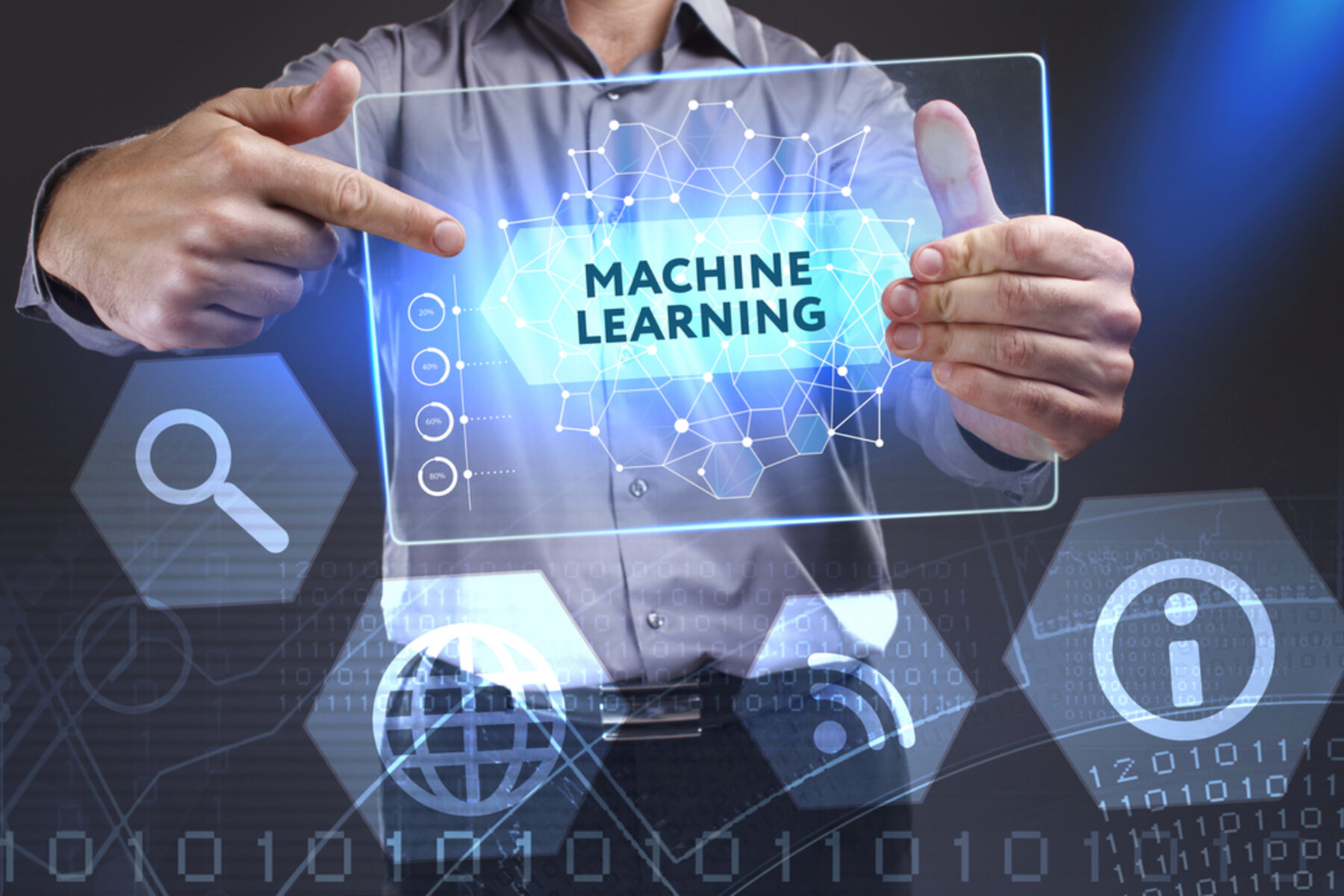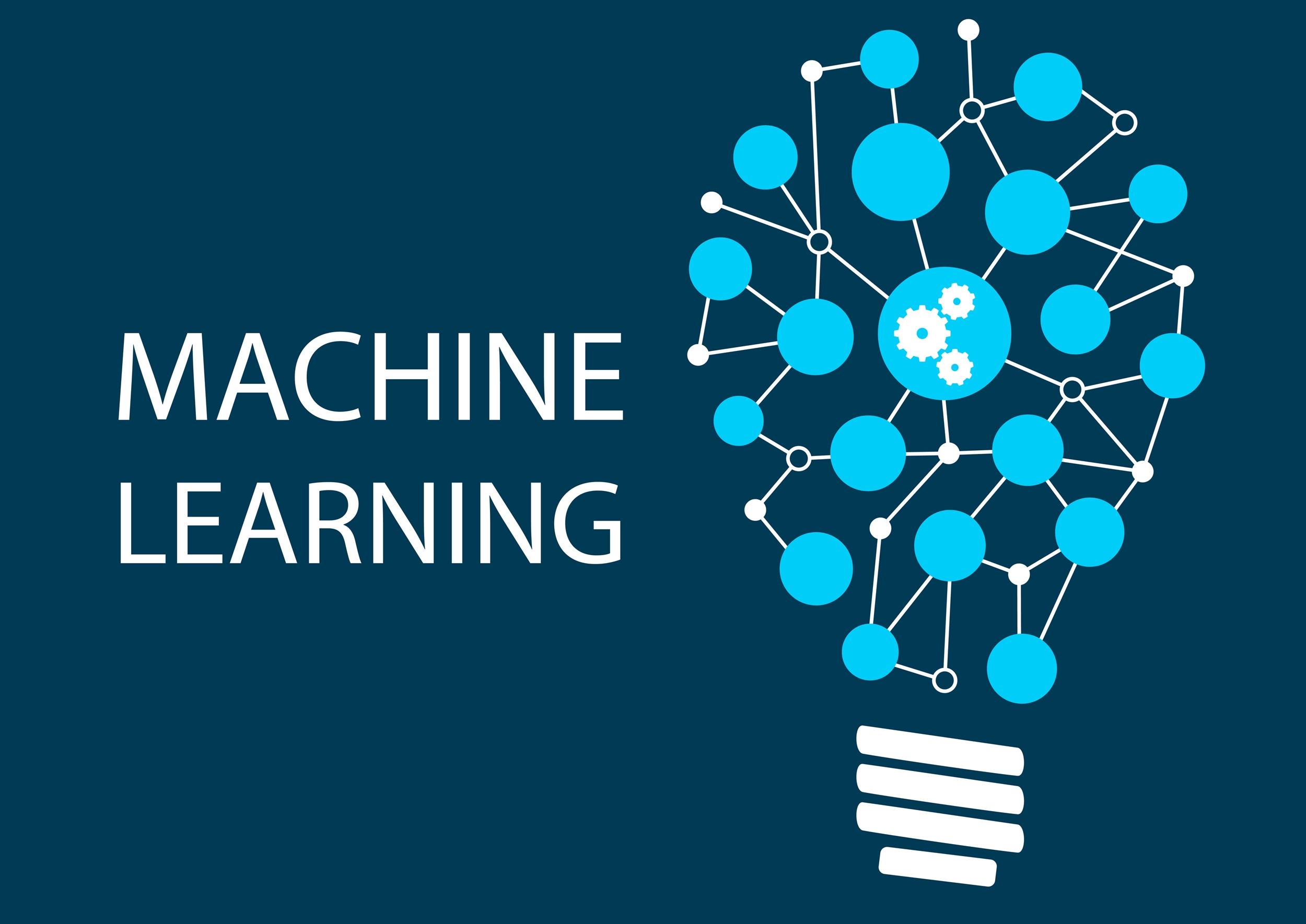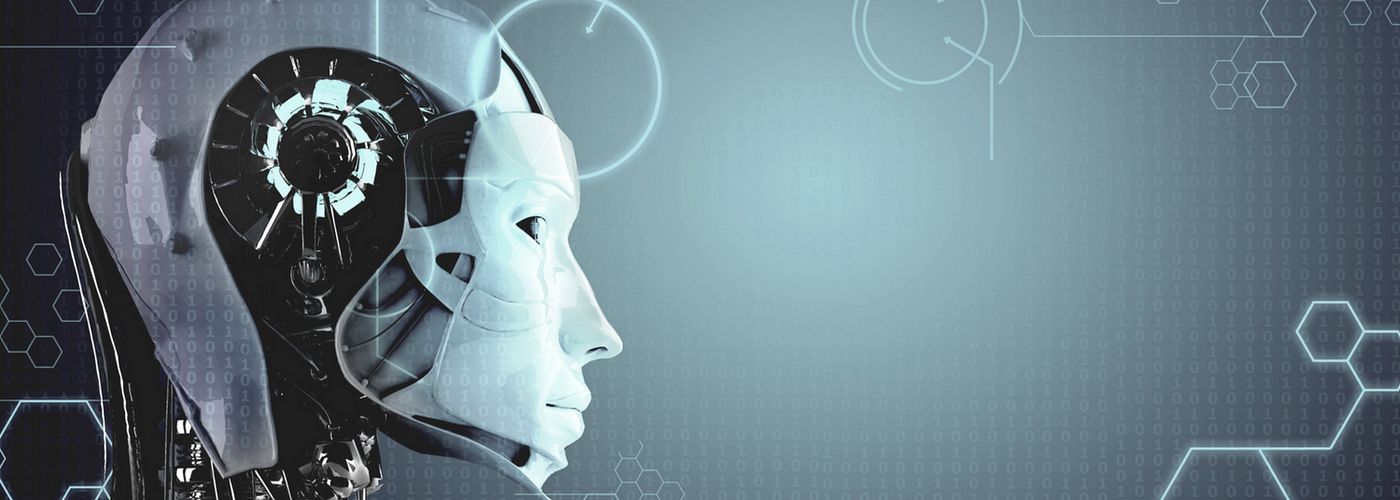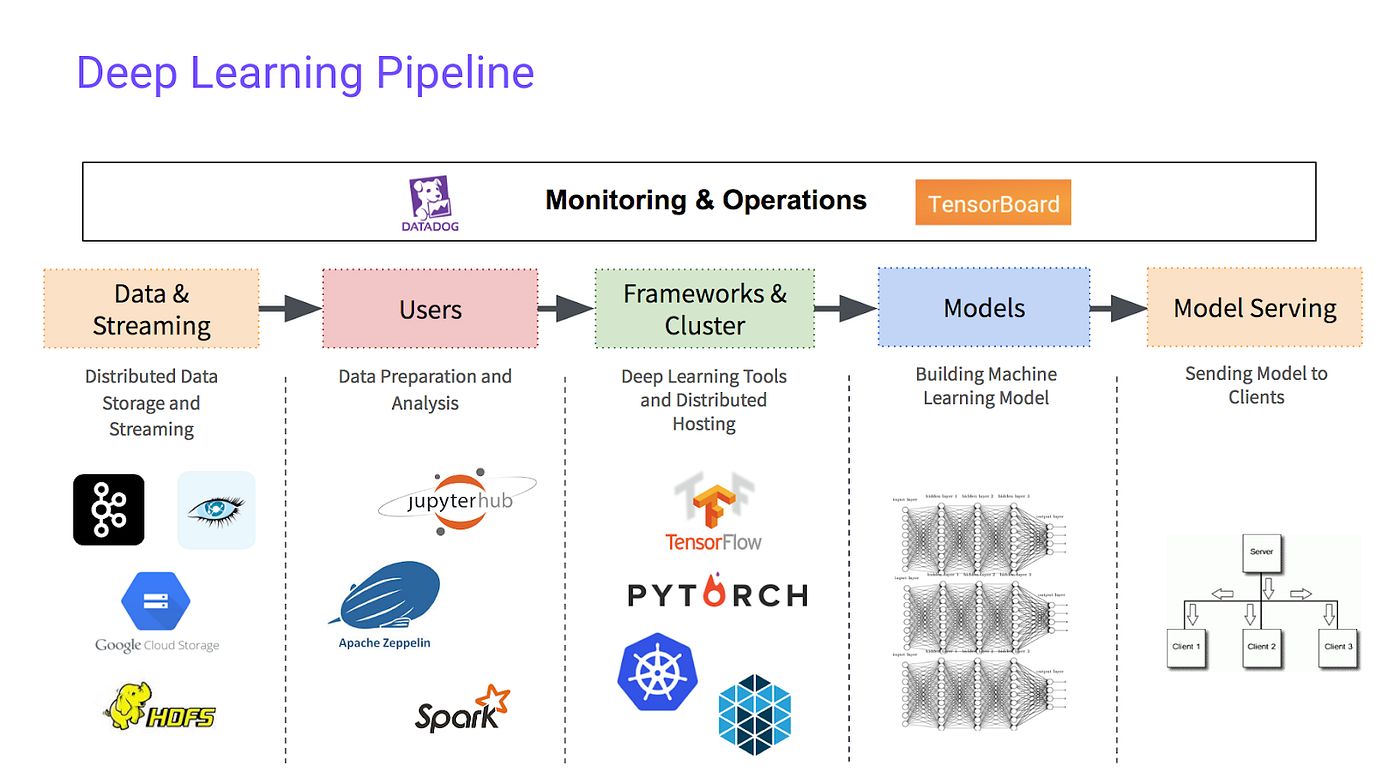Introduction
Machine learning and deep learning are two closely related concepts that have gained significant attention in the field of artificial intelligence. These technologies have revolutionized many industries and are continuing to impact various aspects of our lives.
Machine learning involves the development of algorithms and models that enable computer systems to learn from data and make predictions or decisions without being explicitly programmed. This approach allows machines to identify patterns, learn from examples, and improve their performance over time.
Deep learning, on the other hand, is a subset of machine learning that focuses on developing artificial neural networks inspired by the human brain. These networks consist of multiple layers of interconnected nodes called neurons, which simulate the way the brain processes information. Deep learning algorithms excel at processing vast amounts of unstructured data, such as images, speech, and text, to extract meaningful insights.
In this article, we will explore the concepts of machine learning and deep learning, their origins, applications, as well as the advantages and challenges associated with each.
Definition of Machine Learning
Machine learning is a subfield of artificial intelligence that focuses on enabling computers or machines to learn from data, identify patterns, and make predictions or decisions without being explicitly programmed. It involves the development of algorithms and models that allow machines to automatically recognize and learn from patterns or relationships in the data.
At its core, machine learning aims to build computational models that can analyze and interpret data, learn from it, and make accurate predictions or decisions based on that learning. These models can be trained on large datasets, where they use statistical techniques to extract underlying patterns and relationships.
There are different types of machine learning techniques, ranging from supervised learning to unsupervised learning and reinforcement learning. In supervised learning, the algorithm is trained using labeled data, where the desired output is already known. It learns to map the input data to the correct output by iteratively adjusting its internal parameters.
In contrast, unsupervised learning involves training the algorithm on unlabeled data, where the desired output is not provided. The algorithm learns to cluster or group similar instances together, discover hidden patterns, or reduce the dimensionality of the data.
Reinforcement learning is a type of machine learning where an agent learns how to interact with a dynamic environment to maximize a cumulative reward. It learns by trial and error, receiving feedback from the environment in the form of rewards or penalties, and adjusting its actions accordingly.
Overall, the goal of machine learning is to develop algorithms and models that can automatically improve their performance over time, without explicit programming, by learning from data and experience.
History of Machine Learning
The history of machine learning dates back to the mid-20th century when researchers and scientists began exploring the concept of artificial intelligence. However, the formal development of machine learning as a distinct field began in the 1950s and 1960s.
One of the earliest breakthroughs in machine learning was the development of the perceptron algorithm by Frank Rosenblatt in 1957. The perceptron was a type of linear classifier that could learn and make binary predictions. It laid the foundation for the development of neural networks, which would later become a key component of modern machine learning.
In the 1960s and 1970s, researchers focused on developing symbolic or rule-based learning systems. These systems used expert knowledge to create rules and make inferences based on those rules. However, they were limited in their ability to handle complex or large-scale data.
In the 1980s and 1990s, with the advent of more powerful computers, machine learning experienced a resurgence. Researchers began exploring more sophisticated techniques, such as decision trees, support vector machines, and Bayesian networks. These approaches allowed for more effective handling of complex data and improved predictive accuracy.
In the early 2000s, the rise of the internet and the availability of large datasets led to a new era of machine learning. The field started to embrace techniques such as deep learning and reinforcement learning, which were capable of processing massive amounts of data and achieving impressive results.
Recent years have seen exponential growth in the field of machine learning, fueled by advancements in hardware, algorithms, and the availability of big data. Machine learning is now being applied in various domains, including healthcare, finance, marketing, and autonomous systems.
As the field continues to evolve, researchers and practitioners are continually pushing the boundaries of what machine learning can achieve. It has become an integral part of our technological landscape, revolutionizing industries and unlocking new possibilities.
Types of Machine Learning
Machine learning encompasses various approaches and techniques that can be categorized into different types based on the learning process and the available data. The main types of machine learning are supervised learning, unsupervised learning, and reinforcement learning.
Supervised Learning: In supervised learning, the algorithm is trained using labeled data, where the desired output is already known. The goal is for the algorithm to learn the mapping between input variables and their corresponding output variables. It learns to make predictions or decisions based on the patterns or relationships in the labeled data. Common algorithms used in supervised learning include decision trees, support vector machines, and neural networks.
Unsupervised Learning: Unsupervised learning involves training the algorithm on unlabeled data, where the desired output is not provided. The goal is for the algorithm to discover underlying patterns or relationships within the data. It learns to cluster similar instances together or detect unusual patterns. Unsupervised learning algorithms include clustering algorithms such as k-means clustering, dimensionality reduction techniques like principal component analysis (PCA), and associative rule learning algorithms.
Reinforcement Learning: Reinforcement learning is distinct from supervised and unsupervised learning as it involves an agent learning to interact with an environment to maximize a cumulative reward. The algorithm learns by trial and error, receiving feedback in the form of rewards or penalties based on its actions. It aims to learn the optimal policy or sequence of actions to achieve the highest possible reward. Reinforcement learning is used in applications such as game playing, robotics, and autonomous systems.
Besides these main types, there are also other subcategories of machine learning, such as semi-supervised learning, which combines labeled and unlabeled data; transfer learning, which leverages knowledge from one task to improve performance on another; and online learning, where the model is continuously updated as new data arrives.
The choice of the machine learning type depends on the nature of the problem, the availability of labeled data, and the desired outcome. Understanding these different types allows practitioners to select the most appropriate approach for their specific use case.
Applications of Machine Learning
Machine learning has found applications in various industries and domains, transforming the way businesses operate and improving efficiency and decision-making. Here are some key areas where machine learning is being applied:
1. Healthcare: Machine learning algorithms are used to analyze medical data and make accurate diagnoses. They can help identify patterns and predict diseases, leading to early detection and better treatment plans. Machine learning is also used in personalized medicine, drug discovery, and medical image analysis.
2. Finance: Machine learning is used in financial institutions for tasks such as credit scoring, fraud detection, stock market analysis, and algorithmic trading. By analyzing historical data and patterns, machine learning models can make predictions and improve risk management.
3. Marketing and Sales: Machine learning helps companies analyze vast amounts of customer data to personalize marketing campaigns, recommend products, and optimize pricing strategies. It improves customer segmentation, targeting, and customer experience.
4. Transportation and Logistics: Machine learning is used in transportation networks for tasks such as route optimization, demand forecasting, and vehicle routing. It enables businesses to improve operational efficiency, reduce costs, and enhance supply chain management.
5. Natural Language Processing: Machine learning algorithms are used in natural language processing tasks such as text classification, sentiment analysis, language translation, and speech recognition. This enables machines to understand and generate human language, improving communication and information retrieval systems.
6. Image and Video Processing: Machine learning has revolutionized image and video processing with applications such as object recognition, facial recognition, and video analytics. It is used in self-driving cars, surveillance systems, and medical imaging analysis.
7. Recommendation Systems: Machine learning powers recommendation systems used by e-commerce platforms, streaming services, and social media platforms. These systems analyze user behavior and historical data to make personalized recommendations, improving user engagement and satisfaction.
These are just a few examples of the many applications of machine learning. As the technology continues to advance, the possibilities for its application are expanding, creating opportunities for innovation across various industries.
Challenges in Machine Learning
While machine learning has made significant advancements and shown great promise, it is not without its challenges. Here are some of the key challenges faced in the field of machine learning:
1. Data Quality and Quantity: Obtaining large quantities of high-quality data for training machine learning models can be challenging. Data may contain errors, inconsistencies, or biases that can affect model performance. Additionally, certain domains may lack sufficient labeled data, making it difficult to train accurate models.
2. Model Selection and Tuning: Choosing the right machine learning algorithm and optimizing its parameters can be complex. Different algorithms may perform differently on different datasets, and tuning the parameters requires careful experimentation and validation to achieve the best results.
3. Generalization: Ensuring that machine learning models can generalize well to unseen data is a challenge. Overfitting, where the model performs well on training data but poorly on new data, and underfitting, where the model fails to capture the underlying patterns, are common problems that need to be addressed.
4. Interpretability and Transparency: Many machine learning models, such as deep neural networks, can be complex and difficult to interpret. Understanding why a model made a specific prediction or decision is crucial, especially in sensitive domains like healthcare or finance, where transparency and interpretability are essential.
5. Ethical and Legal Considerations: Machine learning raises important ethical and legal concerns. Issues such as bias in data and decision-making, privacy violations, and the potential for algorithmic discrimination need to be carefully addressed to ensure fair and responsible use of machine learning technologies.
6. Computational Resources: Training complex machine learning models can require significant computational resources, including processing power, memory, and storage. Scaling up these resources can be costly and may limit the adoption of certain machine learning techniques, especially for smaller organizations or individuals.
7. Continuous Learning and Adaptation: Machine learning models need to be continuously updated and adapted to changing conditions and evolving data. Developing methods for incremental learning, model update, and transfer learning is an ongoing challenge.
Addressing these challenges requires continuous research, innovation, and collaboration between researchers, practitioners, and policymakers. By overcoming these hurdles, the field of machine learning can continue to progress and unlock its full potential.
Definition of Deep Learning
Deep learning is a subset of machine learning that focuses on the development of artificial neural networks inspired by the structure and functioning of the human brain. It involves the construction of deep neural networks with multiple layers of interconnected nodes called neurons, which simulate the processing of information in the brain.
At its core, deep learning aims to enable computers to learn representations of data that are hierarchical and layered, allowing for the extraction of high-level features from raw input. These deep neural networks are designed to automatically learn and discover patterns and relationships within the data, without requiring explicit programming or feature engineering.
Deep learning models are typically trained using large amounts of labeled data, where the network learns to map input data to the corresponding output. Through an iterative process called backpropagation, the network adjusts its internal parameters to minimize the difference between its predicted output and the true output. This training process allows the network to learn the most relevant and discriminative features from the data.
One of the key strengths of deep learning is its ability to handle and extract insights from unstructured data, such as images, speech, and text. Deep neural networks can process and analyze these complex forms of data, generating valuable information that can be used for various tasks, including image classification, speech recognition, natural language processing, and even autonomous driving.
Deep learning has seen tremendous success in recent years, thanks in large part to advancements in computational power, the availability of massive datasets, and improvements in algorithmic techniques. The field has achieved remarkable breakthroughs in various domains, reaching or even surpassing human-level performance in some tasks.
Overall, deep learning represents a powerful and innovative approach to machine learning that has revolutionized many industries and opened up new possibilities for artificial intelligence applications.
History of Deep Learning
The history of deep learning can be traced back to the early days of artificial neural networks and their development. While the concept of neural networks dates back to the 1940s, the formal development of deep learning as a distinct field began in the 1980s and 1990s.
In the 1980s, researchers made significant advancements in training deeper neural networks by introducing the backpropagation algorithm. This algorithm allowed for more efficient learning and optimization of neural networks with multiple layers. However, deep neural networks were still limited by computational constraints and a lack of sufficient training data.
During the 1990s, interest in deep learning waned as researchers encountered difficulties in training deep neural networks. Shallow networks, such as support vector machines and decision trees, became more popular due to their ease of training and interpretability. Deep learning was considered computationally expensive and impractical at the time.
The resurgence of deep learning came in the early 2000s when researchers developed new techniques and algorithms to overcome the challenges associated with training deep neural networks. Key breakthroughs included the development of unsupervised learning methods like Restricted Boltzmann Machines (RBMs) and Deep Belief Networks (DBNs), which allowed for pre-training of deep neural networks.
In 2012, deep learning gained global attention when a deep Convolutional Neural Network (CNN) named AlexNet achieved state-of-the-art results in the ImageNet Large Scale Visual Recognition Challenge. AlexNet demonstrated the power of deep learning in image classification tasks and sparked renewed interest in the field.
Since then, deep learning has seen exponential growth and has become a dominant approach in various domains. Advancements in hardware, such as Graphics Processing Units (GPUs), have enabled faster training and inference on deep neural networks. Also, the availability of large-scale labeled datasets, like ImageNet, has contributed to the success of deep learning algorithms.
Today, deep learning is extensively used in areas such as computer vision, natural language processing, speech recognition, and autonomous systems. Deep neural networks, including Convolutional Neural Networks (CNNs), Recurrent Neural Networks (RNNs), and Generative Adversarial Networks (GANs), have achieved remarkable results and have surpassed human-level performance in several tasks.
As research and development continue, deep learning is expected to advance further, with the potential to solve more complex problems and contribute to advancements in artificial intelligence.
Differences between Machine Learning and Deep Learning
While machine learning and deep learning are closely related concepts, there are several key differences between the two. Understanding these differences can help in determining the most suitable approach for a given problem. Here are some of the main distinctions:
Data Representation and Feature Engineering: In traditional machine learning, the features or input representation are manually engineered and selected by domain experts. These features are then fed into the learning algorithm for training and prediction. In contrast, deep learning algorithms learn feature representations automatically from the raw input data. Deep neural networks have the ability to discover intricate and abstract features, making them more flexible and powerful when dealing with complex data such as images and natural language.
Model Architecture: Machine learning often employs shallow models with a limited number of layers, such as decision trees or support vector machines. These models are effective for certain tasks but may struggle with complex or high-dimensional data. Deep learning, on the other hand, employs deep neural networks that consist of multiple layers of interconnected nodes. The depth of the networks allows for hierarchical abstraction and better representation learning, making deep learning models more adept at capturing intricate patterns and relationships in the data.
Data Requirements and Scalability: Machine learning models typically require labeled training data to learn from. These models may only achieve optimal performance when sufficient labeled data is available. Deep learning models, on the other hand, can benefit from both labeled and unlabeled data. In many cases, deep learning models require large amounts of labeled data to be successfully trained. However, once trained on extensive datasets, deep learning models can generalize well and typically show greater scalability and robustness compared to traditional machine learning models.
Computational Requirements: Deep learning models, especially those with complex architectures, require considerable computational resources for training and inference. These models often benefit from high-performance hardware, such as Graphics Processing Units (GPUs) or specialized hardware like Tensor Processing Units (TPUs), to speed up computations. Traditional machine learning models are generally less computationally intensive and can be trained and deployed on less powerful hardware.
Interpretability: Traditional machine learning models are often considered more interpretable compared to deep learning models. Machines learning models, such as decision trees or linear regression, provide clear insights into how the model arrives at its predictions. In contrast, deep learning models lack interpretability due to their complex architectures and numerous internal parameters. Understanding the decision-making process of deep learning models can be challenging, raising concerns in domains where interpretability is essential, such as healthcare or finance.
While both machine learning and deep learning have their strengths and limitations, the choice between them depends on the nature of the problem, available data, and specific requirements of the application. Deep learning excels in complex, high-dimensional data domains, while traditional machine learning remains effective for many simpler applications.
Advantages and Disadvantages of Deep Learning
Deep learning, a subset of machine learning, offers several advantages and disadvantages that shape its applicability and effectiveness in various domains. Understanding these pros and cons is crucial for assessing whether deep learning is the right approach for a particular problem. Here are some key advantages and disadvantages of deep learning:
Advantages:
1. End-to-End Learning: Deep learning models have the ability to learn directly from raw data, eliminating the need for manual feature engineering. This end-to-end learning approach allows the models to automatically learn hierarchical representations and extract high-level features, leading to improved performance on complex tasks.
2. Superior Performance on Complex Data: Deep learning excels at processing and analyzing complex, high-dimensional data such as images, speech, and text. The depth and flexibility of deep neural networks make them highly effective in tasks such as image recognition, speech synthesis, and natural language processing.
3. Transfer Learning: Deep learning models can leverage pre-trained weights and architectures for transfer learning. This means that models trained on large-scale datasets and complex tasks can be fine-tuned on smaller, similar tasks, resulting in faster training and improved performance, especially in scenarios where limited labeled data is available.
4. Scalability and Robustness: Deep learning models can scale with the amount of labeled data, becoming more accurate as the dataset size increases. They have shown robust performance even when dealing with large and diverse datasets, making them suitable for real-world, complex problems across different domains.
Disadvantages:
1. Need for Large Labeled Datasets: Deep learning models often require substantial amounts of labeled data for effective training. Acquiring and labeling such datasets can be time-consuming, labor-intensive, and costly, posing challenges for applications with limited labeled data availability.
2. Computationally Intensive: Training deep learning models, particularly those with larger and more complex architectures, demands significant computational resources. Training on powerful hardware, such as GPUs or TPUs, can be expensive and may hinder the deployment of deep learning models in resource-constrained environments.
3. Lack of Interpretability: Deep learning models, with their complex architectures and numerous parameters, lack interpretability. Understanding the decision-making process of a deep neural network can be challenging, raising concerns in domains where interpretability and explainability are crucial, such as healthcare and finance.
4. Proneness to Overfitting: Deep learning models are prone to overfitting, especially when trained on limited datasets. Overfitting occurs when the model becomes too specific to the training data, resulting in poor generalization to new, unseen data. Techniques such as regularization and early stopping can help mitigate overfitting, but it remains a challenge.
While the advantages of deep learning, such as end-to-end learning and high performance on complex data, make it a powerful tool, the disadvantages, such as the need for large labeled datasets and interpretability issues, require careful consideration when applying deep learning in practical applications.
Applications of Deep Learning
Deep learning, with its ability to automatically learn hierarchical representations and extract high-level features from complex data, has found applications in various domains. Its versatility and performance have led to advancements in multiple fields. Here are some key areas where deep learning is being applied:
1. Computer Vision: Deep learning has revolutionized computer vision tasks such as image classification, object detection, and image segmentation. It has enabled the development of highly accurate and efficient models that can recognize and understand visual content. Applications include autonomous vehicles, surveillance systems, medical imaging, and facial recognition.
2. Natural Language Processing (NLP): Deep learning has made significant advancements in NLP tasks, including language translation, sentiment analysis, text generation, and question answering systems. Deep neural networks, such as recurrent neural networks (RNNs) and transformer models, have improved the understanding and generation of human language, leading to powerful language processing applications.
3. Speech Recognition: Deep learning has transformed speech recognition technology, making it more accurate and widely applicable. Through models such as recurrent neural networks (RNNs) and convolutional neural networks (CNNs), deep learning has enabled advancements in voice assistants, transcription services, and voice-controlled systems.
4. Healthcare: Deep learning has made significant contributions to healthcare, including medical image analysis, disease diagnosis, and drug discovery. Deep learning models can accurately detect and classify diseases from medical images, predict patient outcomes, and even identify potential drug candidates by analyzing molecular data.
5. Robotics: Deep learning has enhanced the field of robotics by enabling robots to perceive and interact with the environment. Deep learning algorithms enable robots to process visual and sensory data, perform object recognition, grasp objects, and navigate in complex environments. This has applications in industries such as manufacturing, logistics, and healthcare.
6. Finance: Deep learning has proven valuable in finance, where it is used for tasks such as fraud detection, algorithmic trading, credit risk assessment, and financial market prediction. Deep learning models can analyze large-scale financial data and discover intricate patterns and trends that assist in making more accurate predictions and decisions.
7. Recommendation Systems: Deep learning techniques are employed in recommendation systems used by e-commerce platforms, streaming services, and social media platforms. Deep learning models analyze user behavior and preferences to generate personalized recommendations, improving user experience and engagement.
These are just a few examples of the numerous applications of deep learning. As the field continues to advance, deep learning is expected to contribute to further breakthroughs and innovations in various industries, pushing the boundaries of what is possible with artificial intelligence.
Challenges in Deep Learning
Deep learning, despite its remarkable achievements, still faces several challenges that researchers and practitioners continually work to overcome. These challenges can affect the performance, scalability, and applicability of deep learning models. Here are some of the key challenges in deep learning:
1. Data Availability: Deep learning models typically require large amounts of labeled data to achieve optimal performance. However, acquiring and labeling such data can be time-consuming, expensive, and sometimes impractical. Limited availability of labeled data can hinder the training and generalization capabilities of deep learning models.
2. Computational Resources: Training deep learning models can be computationally demanding, especially for complex architectures or when working with large datasets. The training process often requires high-performance hardware, such as GPUs or TPUs. Access to and affordability of such resources can be a challenge for individuals or organizations with limited computational power or budget.
3. Model Interpretability: Deep learning models are often considered black boxes, lacking transparency and interpretability. Understanding how and why a deep neural network reaches a particular decision or prediction can be challenging, inhibiting its practicality in domains where interpretability is crucial, such as healthcare or finance. Developing techniques for improving interpretability without compromising performance remains an ongoing challenge.
4. Overfitting: Deep learning models are prone to overfitting, whereby the model becomes too specific to the training data and fails to generalize well to new, unseen data. Overfitting can occur when the models are complex and trained on limited or noisy data. Techniques like regularization, early stopping, and data augmentation are employed to mitigate overfitting, but it remains a challenge to strike the right balance between model complexity and generalization capabilities.
5. Ethical and Legal Concerns: As deep learning models become more prevalent, ethical and legal challenges arise. Issues such as bias in data and decision-making, privacy violations, and potential algorithmic discrimination need to be carefully addressed. Striking a balance between innovation and responsible implementation of deep learning technologies is crucial for ensuring their ethical and fair use.
6. Transfer Learning: While transfer learning has proven effective in leveraging pre-trained models for different tasks, adapting these models to new domains or tasks remains a challenge. Fine-tuning models and effectively transferring knowledge from one domain to another requires careful consideration of data biases, performance degradation, and maintaining the integrity of the pre-trained model.
7. Continual Learning and Adaptation: Deep learning models often require substantial retraining or fine-tuning when faced with new data or changing environments. Developing effective methods for continual learning, where models can adapt and update their knowledge incrementally, is an ongoing challenge. This is particularly crucial in applications such as autonomous systems or dynamic real-world scenarios.
Addressing these challenges requires ongoing research, collaboration, and innovations in the field of deep learning. Overcoming these hurdles will pave the way for more robust, interpretable, and ethical deep learning models that can deliver reliable and transformative solutions in a wide range of applications.
Conclusion
Machine learning and deep learning represent two powerful approaches in the field of artificial intelligence. Machine learning focuses on developing algorithms that enable computers to learn from data and make predictions or decisions, while deep learning, a subset of machine learning, harnesses the power of deep neural networks to extract high-level features and insights from complex data.
Both machine learning and deep learning have made significant advancements and found applications in various domains. Machine learning has proven effective in tasks such as pattern recognition, fraud detection, and personalized recommendations. Deep learning, on the other hand, has transformed computer vision, natural language processing, and speech recognition, achieving state-of-the-art performance in these areas.
However, each approach has its own advantages and challenges. Machine learning relies on hand-engineered features and is generally more interpretable, making it suitable for domains that require transparency. Deep learning, with its ability to automatically learn hierarchical representations, excels in complex and high-dimensional data domains but may lack interpretability.
Key challenges in both machine learning and deep learning include data availability, computational resources, model interpretability, overfitting, and ethical considerations. Addressing these challenges requires ongoing research, innovation, and collaboration between academia, industry, and policymakers.
As technology continues to advance, the further adoption of machine learning and deep learning is expected across various sectors. Both approaches will play significant roles in shaping the future of artificial intelligence, revolutionizing industries, and driving innovation.
Overall, machine learning and deep learning have opened new possibilities for solving complex problems and have propelled the field of artificial intelligence into new realms. With continued development and advancements, these approaches hold immense potential for addressing some of the most pressing challenges of our time and elevating human capabilities to new heights.







